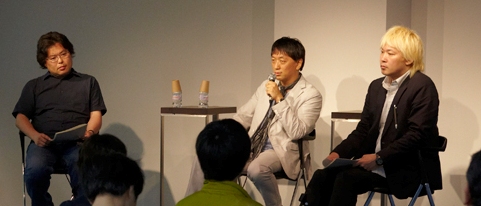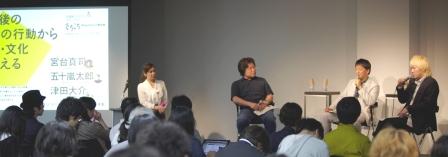Taking into Consideration Actions of Young People in Our Culture and Society After 3/11 (Part I)
Shinji Miyadai (Sociologist)
Taro Igarashi (Architecture Critic)
Daisuke Tsuda (Media Journalist)
For Japan, 3/11 is becoming a big turning point in all aspects of Japanese society, such as politics, the economy, and culture. How will this great earthquake continue to affect Japanese society? In this panel discussion, we explored the cultural and societal change after 3/11 and its background through different subjects such as the specific actions of people, especially young adults and people who are active in the creative fields. We invited Mr. Miyadai, a sociologist from the afflicted district, Sendai City, who's been proactively making statements since the disaster, architecture critic Mr. Igarashi, who directly experienced the earthquake, and Mr. Tsuda, a media journalist who is known for his close observations of current social media and its related youth's movement and who has visited the afflicted area numerous times and. We had them analyze various movements and developments since the day of disaster from their perspectives and debate together the possibility of how this movement could change Japanese society in the future. While it is not easy for anyone to articulate the conditions after the earthquake disaster, we feel that now is the important time to try to analyze our situation from various points of view. In order to keep the discussion open, we chose to broadcast it live in front of the public. As we received feedback from participants that they would welcome this type of discussions semi-regularly at the half a year point and a year later and so on, Wochi Kochi would like to keep providing these forums in the future. (Note: The talk session took place on May 26, 2011. )
The future after a major catastrophe diverges into two directions
IGARASHI: Today we'd like to discuss the theme of "Taking into consideration the actions of young people in our culture and society after 3/11" I will be the moderator. First, I would like each of you to talk about how you experienced this Great Eastern Japan Earthquake and your view of young people's reactions through your experience of closely associating with them through communities such as Universities of afflicted area.
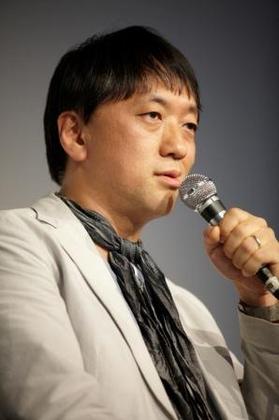 MIYADAI:I live in Setagaya and commute to my university in Hachiouji. In terms of my experience with the earthquake, my main concern became about the radioactive substances discharged from the nuclear plant and the matters regarding it's effect on us after dealing with the big shakes.
MIYADAI:I live in Setagaya and commute to my university in Hachiouji. In terms of my experience with the earthquake, my main concern became about the radioactive substances discharged from the nuclear plant and the matters regarding it's effect on us after dealing with the big shakes.
Aside from that, I have a unique seminar that is "open to all" for students from various Universities enrolled in it. Right after the disaster, my students went to affected areas to volunteer and gave me a wide multitude of information such as troubles with distribution of supplies and differences in evacuation shelters with special focus on the difference between temples or other religious related shelters and all other ones. I have collected quite useful data from them.
First, one of my biggest curiosities is how Japan's particular fragility became apparent through this earthquake disaster. For example, not many donations had been given out yet. At many shelters, they waited until supply rations were in great enough amounts for everybody before they were distributed according to the potential troubles among evacuees. While our government has been blamed for these troubles, since the government is a system based on ordinary times or normalcy, naturally it is a matter, in any country, for non-governmental societal groups such as collectives and religious groups, to take over the end distribution at times of this type of disaster. It's not a case where we should criticize our government, but we do. That's one aspect that shows the weakness of our society. In a nutshell, the point that I am extremely curious about is the weakness of our society where we are too dependent on systems such as the government and markets so that when the system stops running well under unusual circumstances, we cannot achieve self-governance in a communal way.
Another interesting aspect is, I foresee that from now on an advocacy emphasizing the importance of quality, imperative, and communality, will develop amongst teenagers as opposed to chasing frivolous trends in the past. We can predict that many issues will be processed within frames of "mode" or "mood," as a part of what Hideo Kobayashi called "A variety of Device," and that the new trend is to not chase the frivolous trends. There is a good side and bad side to this. I am interested in what comes out of this stream of "mode" and "mood" both in the reconstruction process and in the fields of subculture and pop culture.One last thing is that when a major catastrophe like this great earthquake happens, the future diverges in the aftermath into two paths. The clock starts to tick faster in both directions. With places that originally carried the possibility of declining, that tendency will speed up and will deteriorate in a blow. In places with hopes for long-lasting future, the process of scrapping the old and moving forward onto a new stage will accelerate. For Japan, with our nuclear power case, an opportunity is underway for implementing a recyclable energy in a few years compared to the few decades in which the process would normally take. On a more local level, these might be places that could be exploding with development. On the other hand, there may be aging communities that might have to give up their rehabilitation. In this regard, there will be a question of whether we head toward a disaster or we take this as a benchmark to leap forward. The divergence will be apparent in the form of gaps between communities or as an issue for all of Japan in the coming years.
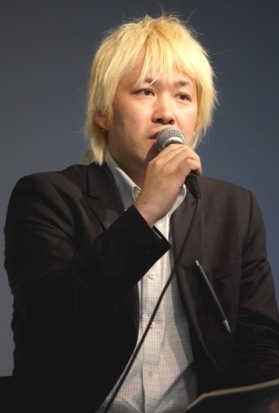 TSUDA:I was at the symposium at Nakano when the earthquake struck onMarch 11th and I thought it was going be an awful situation. Most of my jobs for the next couple of weeks were cancelled and I wanted to get to the afflicted areas instead of being in Tokyo but there was nothing I could do. When I considered things I could do, I thought social media were being tested with the question of whether they can be effective or not in this type of emergency situation. I thought the only thing I could do was to address the flow of information from the inside out. So I decided to give my full attention to information at least until the initial nuclear power plant problem settle and I spent the next couple of weeks on two to three hours of sleep doing just that.
TSUDA:I was at the symposium at Nakano when the earthquake struck onMarch 11th and I thought it was going be an awful situation. Most of my jobs for the next couple of weeks were cancelled and I wanted to get to the afflicted areas instead of being in Tokyo but there was nothing I could do. When I considered things I could do, I thought social media were being tested with the question of whether they can be effective or not in this type of emergency situation. I thought the only thing I could do was to address the flow of information from the inside out. So I decided to give my full attention to information at least until the initial nuclear power plant problem settle and I spent the next couple of weeks on two to three hours of sleep doing just that.
Even after the monitoring the internet for that long, I honestly couldn't tell whether the activities of young people changed or not. What I could tell was that every young person shared something, a feeling of anxiety. Even under this disastrous circumstance, finding a job is an extremely major issue for graduating college students and therefore the number of worried college students increased. For example, a student in Kansai area who wanted to work in Tokyo now has parents who are strongly against it. There are instances in which people in western Japan are encouraging the youngsters in Tokyo to come home. The atmosphere changed especially when a high level of radiation was detected at the Kanamachi water purifying plant in Tokyo. I hear that young people are torn between pursuing their career in Tokyo and their parents against it and telling them to "Come home, you should evacuate." These are not problems we can solve proactively. When they ask me "I want to work in Tokyo but am scared of the radiation. What should I do?," I can only listen thinking that it is not a problem with an easy solution.
When we look closely at the phenomenal side of things, new events are happening in the youth culture that wouldn't have happened before. For example, protests against nuclear energy and for alternative power have finally started to break out nationwide. Up until now young people have had an old image of protests as that of chanting slogans. But the other day, we saw in Koenji about 14,000 young people gathered and raised a ruckus to protest in the style of a rock festival. Of course there's an argument of the rights and wrongs in methodology and the making of loud noises. But Hajime Matsumoto, the organizer of the protest who has put together various projects in Koenji, did not have the popular appeal to gather 14,000 people before the disaster. Also a popular musician, Kazuyoshi Saito, uploaded an anti-nuclear power version of his own single release to Youtube in which he is singing "They lied to you this whole time" instead of "I loved you this whole time". When I saw at the site of the protest, people spontaneously singing this song together, a song that had only spread though YouTube and social media and was never officially released, I realized that a phenomenon we couldn't have imagined happening before was happening right then and there.
At the same time, what's definitely changing are young women's behaviors. More young women with kids began to collect information about nuclear radiation on the internet. This is true in Tokyo and more so as you get closer to Fukushima. For example, journalists who had the furthest connection with young women because of their rather masculine writing, such as Takashi Uesugi and Yasumi Iwakami, rapidly became more popular amongst young mothers. Perhaps the interview videos of Tokyo Electric Power Company that Iwakami posts online communicate a realistic sense of what is happening. So, situations are occurring in a way we could've never imagined in the past, such as a woman watching Iwakami's Ustream instead of trusting the coverage by the major networks her husband works for. It seems that now more mothers are indeed feeling that they need to protect themselves and they're finding that the information needed for their own protection is on the internet. I am paying attention to this as a first time phenomenon.
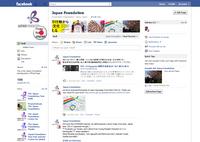 In terms of matters closer to me, in Suginami where I live, like other cities, nuclear power became the main issue for the recent nationwide local election and a young candidate who most likely wouldn't have won before the earthquake won by proposing anti-nuclear power. Ward mayoral election for Setagaya was symbolic as well. I, like others, thought Nobuto Hosaka would do well but did not think he'd become the mayor even with Mr. Miyadai as his referrer. This winning of Mr. Hosaka in Setagaya which is a mature and particular type of area, tells me that quietly, there is some kind of movement underway.
In terms of matters closer to me, in Suginami where I live, like other cities, nuclear power became the main issue for the recent nationwide local election and a young candidate who most likely wouldn't have won before the earthquake won by proposing anti-nuclear power. Ward mayoral election for Setagaya was symbolic as well. I, like others, thought Nobuto Hosaka would do well but did not think he'd become the mayor even with Mr. Miyadai as his referrer. This winning of Mr. Hosaka in Setagaya which is a mature and particular type of area, tells me that quietly, there is some kind of movement underway.
With all these things going on, what I'm interested in now and want to fully explore is the case of New Zealand. When New Zealand was extensively affected by an earthquake before our Great Eastern Japan Earthquake, there was a movement where young people voluntarily came together through the internet. A student at Canterbury University in New Zealand set up a page on Facebook for volunteering called UC Student Army which gathered students in number of thousands and put together a system of donations, distributing supplies and mapping of routes. Since they were students forming this, alumni offered computers, funds and places for the activity which greatly helped with relief effort and recovery. And when things settled, a young leader of this organization ran for an election and won. I'm interested in whether this type of minimum case of success could be maximized while this new phenomenon associated with youth is occurring in Japan as well. Additionally, the issue of nuclear power is enabling discussions about that issue and about politics, which previously you couldn't discuss with your friends. The questions are how openly can we discuss politics, how wildly can we expand our interest, and how much can the internet intervene within. This is what I'm thinking for the next step as we see things slowly starting to calm down since the disaster.
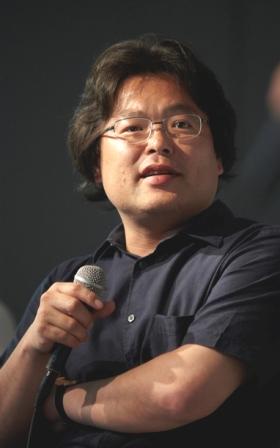 IGARASHI:To summarize my story, I was in Kanto area when the earthquake disaster happened and my panel discussion was cancelled. But what is rather unforgettable for me was the experience of losing my work place. The row of buildings I have an office in at Tohoku University was designated as off-limits with the possibility of collapsing. This for me meant losing my classroom and research room gave me a personal experience to think about how such things can happen in life. Even so, my position is impalpable because it's not like I lost my house or somewhere along the lines of the situation facing Sendai City in terms of the level of damage. I feel the difference in ways of thinking as I go back and forth between Tokyo and Sendai. In Tokyo, for example, the issue of nuclear power is a hot topic, but it is a issue that no one brings up in Sendai and the further you go into the northeast because in these places they're not in any condition to worry about that now. So in that sense I feel like I'm in a half-way position.
IGARASHI:To summarize my story, I was in Kanto area when the earthquake disaster happened and my panel discussion was cancelled. But what is rather unforgettable for me was the experience of losing my work place. The row of buildings I have an office in at Tohoku University was designated as off-limits with the possibility of collapsing. This for me meant losing my classroom and research room gave me a personal experience to think about how such things can happen in life. Even so, my position is impalpable because it's not like I lost my house or somewhere along the lines of the situation facing Sendai City in terms of the level of damage. I feel the difference in ways of thinking as I go back and forth between Tokyo and Sendai. In Tokyo, for example, the issue of nuclear power is a hot topic, but it is a issue that no one brings up in Sendai and the further you go into the northeast because in these places they're not in any condition to worry about that now. So in that sense I feel like I'm in a half-way position.
On the other hand, I think my students, through the events on 3/11, learned first-hand what they thought to be autoptical actually wasn't. Even though the damage was rather small in central Sendai, survival capability was called up on during the first week. And it was far greater than that of Tokyo's in which the situation was not having enough items on the shelf of convenience stores. I imagine that the experience of finding ways to survive when the inflation you thought natural wasn't autoptical, will later on manifest in some kind of form.
In fact, even at our university when our facilities for learning that had naturally been there disappeared, we had to take a stopgap measures to maintain a place for education by doing things we normally won't do, by renting a room, by having a class in the middle of the city, or by setting up an evacuation program to temporarily send students to other nearby universities. We are in a situation where you have to think that way. I imagine both of you have been observing people this time but with my architectural background, I've rather been focusing on ways buildings have collapsed in the affected district. Right now, it has just been a little over two months since the earthquake. Everyone still feels the same way throughout Japan and many people can still share the same challenge. But my interest lies in how people would forget about this in two years, in three years, in five, 10, and 30 years, and in what way this could stabilize in people's remembrance in 50 and 100 years. Within the affected district, there's a place that I have taken my students to during our seminar camp. We went to see the modern architecture of Ishimaki and Oofunawatari. Although I had the knowledge in the back of my head that these areas once were affected by tsunami, I had no consciousness about the danger of it, whatsoever. There are no evidence or recollection of the tsunami itself to begin with in those cities. Of course it has been half a century since the last tsunami happened. Then the question becomes, is it possible for a culture to exist without erasing memories? And speaking of architecture, when I saw the town of Onagawa, I was honestly struck by the fact that there are places that are impossible to protect with architecture and civil engineering . There are places where truly no human effort can win the battle over natural disasters. The level of damage is something that no hardwares we build such as levees will win.
TSUDA: It truly was quite a scene in Onagawa. It is horrible in all affected areas and I saw scene after scene that left me speechless. But the devastation of Onagawa was overwhelming. There is absolutely no scent of human life. Why did Onagawa alone become so uniquely desolate to that degree?
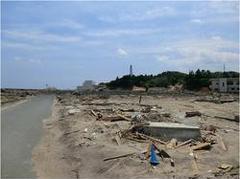 IGARASHI: Usually, afflicted areas have a common scene of wooden houses swept away and the concrete architectures remaining. But in case of Onagawa, since there were many concrete and steel-framed buildings, they actually got lifted up from the substruction, even a four-story building, for example, and they were swept away, something which has become the established image of the scary tsunami scene in media coverage. This transcended the familiar scene of wooden houses being swept away.
IGARASHI: Usually, afflicted areas have a common scene of wooden houses swept away and the concrete architectures remaining. But in case of Onagawa, since there were many concrete and steel-framed buildings, they actually got lifted up from the substruction, even a four-story building, for example, and they were swept away, something which has become the established image of the scary tsunami scene in media coverage. This transcended the familiar scene of wooden houses being swept away.
From Tsuda's Flickr
Stark contrast between "hardware" and "software" in disaster prevention
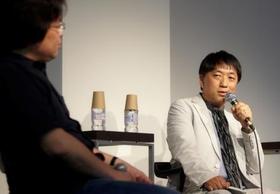 MIYADAI: Since Mr. Igarashi brought up the matter of hardwares and softwares, I want to talk about Mr. Takatoshi Katada, a disaster advisor. In a town of Kamaishi, all students of elementary school and middle school Mr. Katada helped out were evacuated safely except for one student who was taken home by his mother. Like Mr. Igarashi said just now, hardwares are built upon an assumption within an established framework. Natural disasters often exceed our assumptions. Areas where people relied on hardwares and undermined the soft, such as the Taoi district of Miyako city, were almost completely destroyed. In Taoi district, they built double layered 10 meter levees but did not emphasize conducting emergency drills. This is because they relied on hardwares of the levee. On the other hand, in Kamaishi, how to evacuate was always up a topic of discussion because they only had levees shorter than five meters and therefore Mr. Katada happened to be involved. Because they did not rely on the hardwares, they were successful in repeatedly teaching the soft side of things. They preached and practiced what they call "Tsunami Tendenko" which means that in case of emergency beyond the scope of assumptions, they are to evacuate according to their own judgment, which was successful. At least one problem about being dependent on hardwares is apparent here. Mr. Tsuda pointed out the example of New Zealand and the new movement seemingly happening in Japan but if I am to speak negatively, I think this is at most what Rebecca Solnit refers to as "a paradise built in hell" (translated in Japanese to "utopia in disaster"), meaning, because one cannot rely on the system, an activity occurs to compensate the system out of necessity and this may not necessarily be innately a new movement in the end. We can see this in some of the unique occurrences in Japan after the quake. Problems with the governance of our government were revealed. Like Mr. Tsuda also indicated earlier, Japanese media became the "brain-freeze, safe media" that broadcast almost anything the government and the TEPCO say. But in fact, in Setagaya where I live and in adjoining Meguro City, about half of the kids in kindergarten and elementary school were evacuated. Like Mr. Tsuda, I focused on monitoring tweets for about two weeks, and understood that there were actually large numbers of people who followed Mr. Tsuda's and my tweets and that many evacuated their kids. These people did not believe the mass media, as is obvious, so in this sense, what Mr. Toshinao Sasaki calls "mass media's collapse of 2011" became a reality with this earthquake disaster.
MIYADAI: Since Mr. Igarashi brought up the matter of hardwares and softwares, I want to talk about Mr. Takatoshi Katada, a disaster advisor. In a town of Kamaishi, all students of elementary school and middle school Mr. Katada helped out were evacuated safely except for one student who was taken home by his mother. Like Mr. Igarashi said just now, hardwares are built upon an assumption within an established framework. Natural disasters often exceed our assumptions. Areas where people relied on hardwares and undermined the soft, such as the Taoi district of Miyako city, were almost completely destroyed. In Taoi district, they built double layered 10 meter levees but did not emphasize conducting emergency drills. This is because they relied on hardwares of the levee. On the other hand, in Kamaishi, how to evacuate was always up a topic of discussion because they only had levees shorter than five meters and therefore Mr. Katada happened to be involved. Because they did not rely on the hardwares, they were successful in repeatedly teaching the soft side of things. They preached and practiced what they call "Tsunami Tendenko" which means that in case of emergency beyond the scope of assumptions, they are to evacuate according to their own judgment, which was successful. At least one problem about being dependent on hardwares is apparent here. Mr. Tsuda pointed out the example of New Zealand and the new movement seemingly happening in Japan but if I am to speak negatively, I think this is at most what Rebecca Solnit refers to as "a paradise built in hell" (translated in Japanese to "utopia in disaster"), meaning, because one cannot rely on the system, an activity occurs to compensate the system out of necessity and this may not necessarily be innately a new movement in the end. We can see this in some of the unique occurrences in Japan after the quake. Problems with the governance of our government were revealed. Like Mr. Tsuda also indicated earlier, Japanese media became the "brain-freeze, safe media" that broadcast almost anything the government and the TEPCO say. But in fact, in Setagaya where I live and in adjoining Meguro City, about half of the kids in kindergarten and elementary school were evacuated. Like Mr. Tsuda, I focused on monitoring tweets for about two weeks, and understood that there were actually large numbers of people who followed Mr. Tsuda's and my tweets and that many evacuated their kids. These people did not believe the mass media, as is obvious, so in this sense, what Mr. Toshinao Sasaki calls "mass media's collapse of 2011" became a reality with this earthquake disaster.
IGARASHI: Various issues became accelerated and materialized.
MIYADAI: On the other hand, we couldn't say that the internet was a paradise either. For example, the feeling of safety and safety itself are two different things. "Safe" and "Dangerous" are a pair of antonyms, but comparative concepts. In another words, there is no dichotomy between safety and danger. Everything has a commonality of moderately dangerous and moderately safe. But, feeling safe, as Mr. Igarashi mentioned, is based on the idea of obviousness. In Japan's case, the communications around the nuclear power issue were a classic example of this where demarcation between safe-preachers and danger-preachers sprung out from axis of secure or non-secure beliefs. As a result, for the initial ten days after the quake, Twitter was flooded with tweets like "You're bringing on the fear!" and "You should believe Chief Cabinet Secretary Edano", from people who disagreed with opinions from people like myself and Mr. Tsuda which was, not to necessarily trust the government or TEPCO but make judgment on merit by reviewing information on own.
When, after about two weeks, the "worst case scenario" we warned of throughout slowly became realistic and at the point when NHK network reported that it became reality, most of those tweets disappeared. Still, even there, our bad mental habit of being completely dependent of what they think is obvious became very apparent. There is only binomial schematic of secure or non-secure for these people. That makes it almost impossible to discuss political measures that are rational yet reasonable and would likely modestly reduce the percentage of risk.
In fact, situations are happening where, for example, we can't implement a new technology for better safety or can't move the position of an emergency switch. This type of absurdity is coming about because we had been saying that it is absolutely secure based on the "nuclear power is absolutely secure myth" this whole time.
Conclusively, it is rather inevitable we are dismissive towards changing our bad habit after this earthquake disaster. But I think the challenge is to figure out a way to manage while keeping our bad habits in order to reduce the damage and negative effects amongst us.
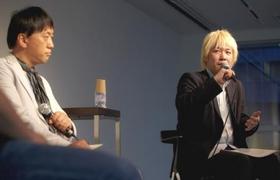 TSUDA: I saw the media contact study results today and found that it is mostly TV and newspaper that people in their 60s are exposed to. And who showed predominant changes after the quake in the results were people in their 20s. There were massive increases in the demographic that now watch NHK network and an now read newspapers. On the contrary, what surprised me the most was the fact that the viewing rate of internet video is decreasing for the 20s in the northeast area. In terms of media, I use new alternative coverage media including NicoNico Video and U-stream, that are different from mass media. What I think of value are live interviews streams. Right now the integrated press conferences at TEPCO take three to four hours, too long to be aired on NHK network. But if there are archives on the internet, we can watch it from beginning to the end whenever we want. And by continually watching the entire press conferences, we can distinguish better between the reasonable parts and questionable parts of what our government is saying. Therefore the rise in exposure rate to mass media amongst the young people of northeast confuses me...
TSUDA: I saw the media contact study results today and found that it is mostly TV and newspaper that people in their 60s are exposed to. And who showed predominant changes after the quake in the results were people in their 20s. There were massive increases in the demographic that now watch NHK network and an now read newspapers. On the contrary, what surprised me the most was the fact that the viewing rate of internet video is decreasing for the 20s in the northeast area. In terms of media, I use new alternative coverage media including NicoNico Video and U-stream, that are different from mass media. What I think of value are live interviews streams. Right now the integrated press conferences at TEPCO take three to four hours, too long to be aired on NHK network. But if there are archives on the internet, we can watch it from beginning to the end whenever we want. And by continually watching the entire press conferences, we can distinguish better between the reasonable parts and questionable parts of what our government is saying. Therefore the rise in exposure rate to mass media amongst the young people of northeast confuses me...
IGARASHI: After all, the local papers have their presence and significance. For example, although I didn't read much of Kawakita Shinpo before, it showed that local media are stronger at getting information from the field which was significant.
TSUDA: There's a sense of reality to it. Local papers in Fukushima show rates of radiation at all monitoring points at the top of the front page. Even though that's the information you most want to know, it's never at the top of asahi.com. The significance of local media might have been redefined for providing the information you want properly.
IGARASHI: Even considering what you see on your TV, in the northeast, information related to relief efforts is still shown on the edge of the screen on all channels, whereas in Tokyo, it's back to normal. As not everybody collects information online, local media is still an important source. As for even more local media, hand written wall newspapers were overflowing on walls of shelters right after the disaster.
MIYADAI: Because there still are conditions in Fukushima and many other areas in the northeast that are far from safe, they are able monitor radiation level in real time. But on the contrary, in Tokyo, we can still cling onto the image of "absolute security". And that's the place where mass media organizations repeatedly report government's comment like, "it will not affect your health immediately". We don't need to trace back Chief Cabinet Secretary Edano's past comments to understand that this is inconsequential. We call a substance "poison" when it risks your health immediately but all of what we call "toxic substance" has late-onset. Asbestos, for example, gives a lesion to your lung after 30 years and cancer from being exposed to radiation also develops decades later. The increase in the number of leukemia patients in Hiroshima after the atomic bomb is still talked about 60 years later. All of those are late-onset, right? There's no point in circulating the message that there is no immediate effect. The issue of toxic substance is about it's late-onset, that is to say, even if there are no immediate effects, what are the kinds of possible effects it could have on us in the future.
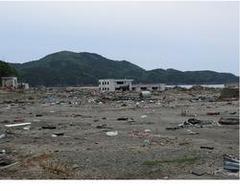 TSUDA: It is slowly beginning to be known now that in areas like Minami Soma, around March 15th or the 16th, when the nuclear plant had a hydrogen explosion, evacuation was ordered to employees of major networks, newspapers and other mass media. While the policy was different depending on the organization, I understand the basic order was not to enter within the 40 to 50 kilometers radius. Though there were still journalists entering off duty, they couldn't station there. Journalists of major commercial networks sought an early evacuation for their wives and kids to western Japan because of the evacuation order, which I don't think is a problem itself. What I'm wondering is why they wouldn't disclose that they were reporting while they evacuated from the 40 to 50 kilometers radius.
TSUDA: It is slowly beginning to be known now that in areas like Minami Soma, around March 15th or the 16th, when the nuclear plant had a hydrogen explosion, evacuation was ordered to employees of major networks, newspapers and other mass media. While the policy was different depending on the organization, I understand the basic order was not to enter within the 40 to 50 kilometers radius. Though there were still journalists entering off duty, they couldn't station there. Journalists of major commercial networks sought an early evacuation for their wives and kids to western Japan because of the evacuation order, which I don't think is a problem itself. What I'm wondering is why they wouldn't disclose that they were reporting while they evacuated from the 40 to 50 kilometers radius.
MIYADAI: It contradicts logically. Areas for evacuation should be decided upon the results of the radiation monitoring in real time and not in a concentric fashion. From the military stand point, a minimum distance for evacuation without causing panics is determined and concentric circles are drawn in case of explosive situations. So if the government announces a concentric distance of evacuation, it also means that they are making plans on the assumptions of explosive situations. In this case it doesn't make any sense to assume damages in concentric fashion because radiation harm can be carried by rain and clouds that the only way to determine the high radiation area is by monitoring it in real time.
TSUDA: We're sidetracked from today's theme of the youth movement by the nuclear power issue, but according to the employees of Minami Soma City Hall, the first ones to come back to the site, as you can imagine, were the local press after the organizations belonging to the local press club hurried off to evacuate. The local papers began stationing there, but major ones didn't. When I talked to people in mass media organizations, especially people in TV networks, I was shocked to hear them say "There's no need to go into the site because there's no good picture". In situations like Minami Soma, where there's still people living within the 50 kilometers radius of the nuclear plant yet arein a way abandoned by the media, it concerns me that there aren't any young people who would try to launch a new alternative media online and cover information that mass media doesn't, and do so in a different style compared to the local papers. There are private twitter users but nothing that developed into a bigger medium.
IGARASHI: There was a case where a mayor broadcasted online from the nuclear plant area, right?
TSUDA: Yes, the mayor of Minami Soma. It became a popular topic worldwide and he was chosen as one of the "2011 Time's 100". But it turns out that he thought he was giving an interview to a TV station instead of a Youtube network. So it wasn't in the style where he had an interview on Youtube hoping to appeal to the world. Supposedly he's been more careful with interviews with internet media since he received enormous reactions. But I think that's a shame. If they understood why he was chosen for Time's 100, it could have even beenpossible to open up a new internet media. It seems rather typical that they're intimidated by the burst of accessed views.
Call of change in daily concept. From "dependence" to "independent"
IGARASHI: As Mr. Miyadai mentioned, concentric circles are ideological model and in fact, as is tsunami damage of affected area different depending on geography and environment, there are finer difference in radiation harm with geography and direction of wind. On the other hand, people who had initially evacuated are coming back to Tokyo for the new school year. Even though we initially tried hard to find what is real by researching online, people have started to feel tired after a certain amount of time. I think that some people would go back to the brain-freeze state when their brain becomes tired. Although what Mr. Miyadai once called "the endless daily life", may have been cut off by 3/11, do we now need to suffer the endless floating between normal and abnormal life which also becomes mentally stressful in a different sense?
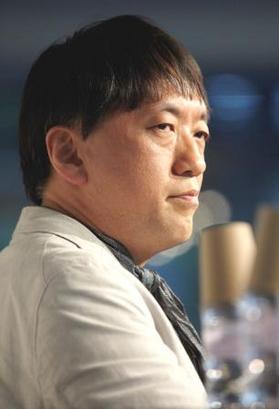 MIYADAI: We need to change our ideas about daily life; from dependence to independence. Particularly in Japan, it is difficult to resort to religious associations. Therefore the self-governance of communities become important. There are various answers to the question, what makes the bondage, the glue, the link, or the connection within a community. Sometimes it's blood ties, or connection at work, or it could be a link on the internet. In case of Japan, these ties had been broken in pieces for a while up until now regardless of the earthquake. The fundamental bond that is necessary to complete any communal governance is barely there. So we need to use anything and everything as a trial and error method. But as Mr. Igarashi said, our so called normal life has been dependence, in another words, it has been based on security and that as soon as people find themselves without this reassurance, they become brain-dead. It is important to us not to base our lives upon security but upon a condition where safety and risk are relative so we can still govern ourselves when we're cut-off from the system. One of the main reasons behind the many people of Setagaya and Meguro evacuating their kids is that many of them have social capital they can rely on, which left me with a strong impression. It is possible that many young people who expressed their doubts about my or Mr. Tsuda's tweets had to modify their perceptions due to lack of social capital. Because they don't have the social capital to evacuate, even if they actually believed part of our tweeted information to be true, as it says in cognitive consistency theory, there is a possibility that they adapted their perceptions to the attribution they have no control over, like we argue in cognitive consistency theory. It is known in history that people who live their lives based upon things that they think are naturally there tend to perceive all things in that way. We need to change this aspect in which people confuse what they think should be there with their day-to-dayness.
MIYADAI: We need to change our ideas about daily life; from dependence to independence. Particularly in Japan, it is difficult to resort to religious associations. Therefore the self-governance of communities become important. There are various answers to the question, what makes the bondage, the glue, the link, or the connection within a community. Sometimes it's blood ties, or connection at work, or it could be a link on the internet. In case of Japan, these ties had been broken in pieces for a while up until now regardless of the earthquake. The fundamental bond that is necessary to complete any communal governance is barely there. So we need to use anything and everything as a trial and error method. But as Mr. Igarashi said, our so called normal life has been dependence, in another words, it has been based on security and that as soon as people find themselves without this reassurance, they become brain-dead. It is important to us not to base our lives upon security but upon a condition where safety and risk are relative so we can still govern ourselves when we're cut-off from the system. One of the main reasons behind the many people of Setagaya and Meguro evacuating their kids is that many of them have social capital they can rely on, which left me with a strong impression. It is possible that many young people who expressed their doubts about my or Mr. Tsuda's tweets had to modify their perceptions due to lack of social capital. Because they don't have the social capital to evacuate, even if they actually believed part of our tweeted information to be true, as it says in cognitive consistency theory, there is a possibility that they adapted their perceptions to the attribution they have no control over, like we argue in cognitive consistency theory. It is known in history that people who live their lives based upon things that they think are naturally there tend to perceive all things in that way. We need to change this aspect in which people confuse what they think should be there with their day-to-dayness.
TSUDA: In terms of social capital, people at shelters in northeast can get along without any major trouble because they already have a strong bond within their local community. I encountered some surprising stories during my five days of reporting, like the one about a reconstruction plan being drawn by a community that has been carrying on since the Genorku era and you have to be from the original families to be in it. Are these local communities that are unique in the northeast the same social communities Mr. Miyadai mentioned just now?
MIYADAI: That is one kind of social capital but is also what we know as "KO (association). For example, "Tanomoshi-ko" and other similar old networks exist nationwide but oftentimes they're extremely exclusive. I often use the term "fire company network" which is similar in essence to middle school alumni networks and those "association" networks. That means, newcomers cannot join the community even if they're all in the same local connection; this leads to friction. They occur when a new by-pass or an industrial complex development emerge in town which can then lead to tension or bullying among kids. During disaster or emergency situations, even discrimination over who helps whom. The challenge is figure out how open we want these networks to be. Out of all 23 wards of Tokyo, Setagaya, where I live, also has very strong network of former residents.
TSUDA: It is definitely a closed community.
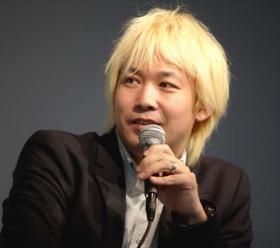 MIYADAI: Though in Setagaya's case, there are parts where the people with powerful influence have consciously been taking an open-minded and inclusive approach, which creates a very unique local character. The Daisawa area of Setagaya and Ohokayama area of Meguro are known for their former residents ability tohave an exceptionally welcoming approach to the newcomers. In that sense, if the people with power kept their exclusive attitudes, this could provoke the deteriorationof the community in the future. It is necessary to advocate the idea that welcoming newcomers and creating new bonds would take new power to the community as well as provide useful knowledge that wasn't available before.
MIYADAI: Though in Setagaya's case, there are parts where the people with powerful influence have consciously been taking an open-minded and inclusive approach, which creates a very unique local character. The Daisawa area of Setagaya and Ohokayama area of Meguro are known for their former residents ability tohave an exceptionally welcoming approach to the newcomers. In that sense, if the people with power kept their exclusive attitudes, this could provoke the deteriorationof the community in the future. It is necessary to advocate the idea that welcoming newcomers and creating new bonds would take new power to the community as well as provide useful knowledge that wasn't available before.
TSUDA: If there's one thing we can anticipate from 3/11 is the appearance of a new regional leaders, like Mr. Miyadai just said, young people who can take the central role in reconstruction which can lead to generation changes. I think it will be interesting if something similar to the case of New Zealand could happen.
Continues to Taking into consideration the actions of young people in our culture and society after 3/11 (Part 2)
Should young people go to the site of disaster? And what about future relations with countries overseas?
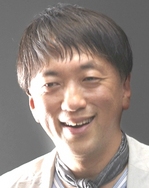 Shinji Miyadai
Shinji Miyadai
Sociologist. Film Critic. Professor at Tokyo Metropolitan University.
He was born in Sendai City in1959 and received a Ph.D. degree in sociology at Tokyo University. He has written many books including "Drawbacks of Japan" "Disengagement from Nuclear Powered Society - Encouraging Natural Energy and Community Government (Co-author)"
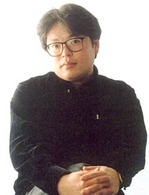 Taro Igarashi
Taro Igarashi
Critic of architecture and architecture history. Professor at Graduate School of Engineering, Tohoku University.
He was born in Paris, France, in 1967.
Author of "Invisible Earthquake Disaster" and more.
La Biennale di Venezia 2011, 11th Architecture Show Commissioner
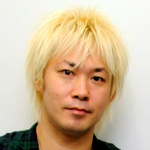 Daisuke Tsuda
Daisuke Tsuda
Media Journalist. Visiting Instructor at Graduate School of Politics, Journalism, Waseda University.
Born in Tokyo in 1973.
Author of "Theory of Twitter Society"
Photo by Kenichi Aikawa
Related Articles
Related Events
Keywords
- Media
- Architecture
- Cultural Heritage
- Ethnic Group
- Culture and Society
- Language
- Medical/Health
- Politics
- Economics/Industry
- Education/Children
- Social Securities/Social Welfare
- Natural Environment
- Philosophy/Religion
- History
- NPO/NGO
- Social Community
- Creative City
- Region
- Cultural Diversity
- Peacebuilding
- Social Enterprise
- Cultural Policy/Public Diplomacy
- Japan
- 3.11
- Great East Japan Earthquake
- earthquake
- tsunami
- nuclear power plant
- Shinji Miyadai
- Taro Igarashi
- Daisuke Tsuda
- Kesennuma
- Onagawa
- Minamisoma
- Minamisanriku
- Ishinomaki
- Flickr
- social media
- Tohoku University
- Tokyo Metropolitan University
- Waseda University
- sociology
- religion
Back Issues
- 2023.12. 7 Movie Theaters aroun…
- 2023.6.16 The 49th Japan Found…
- 2023.4.24 The 49th Japan Found…
- 2022.12.27 Living Together with…
- 2022.12.27 Living Together with…
- 2022.8.12 Inner Diversity <…
- 2022.3.31 The 48th Japan Found…
- 2022.3.29 Beyond Disasters - T…
- 2021.11.29 Crossing Borders, En…
- 2021.4.13 Crossing Borders, En…



